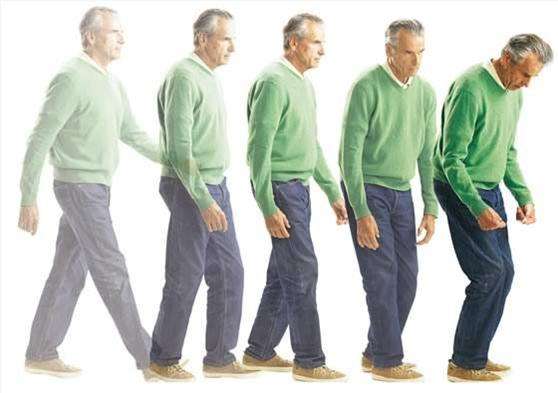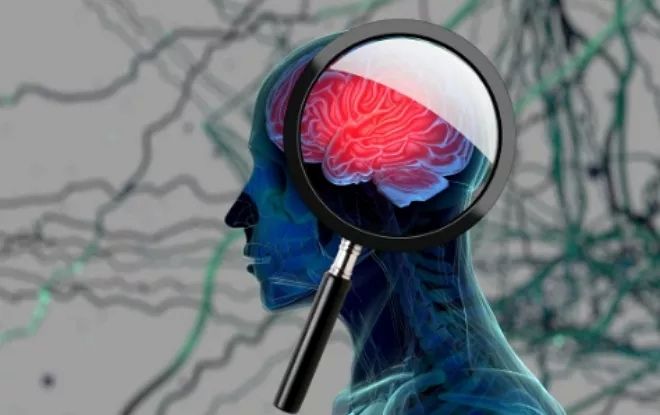美国演员阿伦·阿尔达(Alan Alda)透露他患有帕金森氏症,他说是一个不寻常的梦促成了他的诊断——

Alda最著名的角色是电视连续剧《M*A*S*H》中的陆军司令“鹰眼”皮尔斯,在经历了一个鲜为人知的帕金森早期征象后,于三年半前被确诊。他说,他读了一篇关于身体如何表现你的梦,可以是神经系统疾病的最早前兆之一的文章后,让医生为他做了帕金森病的测试。
Alda说:我要求做一次扫描,因为我想我可能患上了帕金森病。我读了《纽约时报》上Jane Brody的一篇文章,文章指出如果你得了这种病,如果你表现出了你的梦,那么很有可能是一个很早的症状。他意识到这样的事情发生在自己身上。
Alda解释说:“梦中有人攻击我,我向他们扔了一袋土豆,现实中我真的是向我的妻子扔了一个枕头。”
就在那时,他没有疾病的其他迹象。连医生都不解地问:为什么要扫描?你没有任何症状。Alda回忆说。
抓住帕金森早期的重要性
在美国大约有100万人患有帕金森病,而大多数人都能认识到疾病后期阶段的迹象,例如震颤和步态拖曳,早期的征兆很难精确确定。
韦尔康奈尔医学院和纽约长老会医院帕金森病/运动障碍研究所的Claire Henchcliffe博士说,出于多种原因,在早期阶段抓住这种疾病是有好处的。
她说:“有一些可以改变的生活方式因素,比如锻炼和饮食,而这些都不乐观能证明可延迟帕金森发病。诊断也意味着如果这个人想参与临床研究,那么他们可以为发展对帕金森的理解和治疗做出真正的贡献。
睡眠障碍与帕金森病
Henchcliffe注意到,睡眠障碍,包括入睡或睡着、多动腿综合征和其他睡眠障碍在帕金森人群中是常见的。多年来,关于睡眠问题是帕金森病的并发症抑或是疾病的先兆一直争论不休——这是一种早期症状,在其他症状出现之前就已经显示出了。
“事实证明,一个关键的环节是对某些特定睡眠障碍的认识(如REM睡眠行为障碍或RBD),不但影响帕金森病人,而且事实上在某些情况下出现的时间早于导致诊断的运动症状,”nchcliffe说。因此,对于某些类型的睡眠障碍,我们可能仍在争论它们是否是先兆或并发症,对于RBD来说,现在有非常有力的证据表明,这可能预示着帕金森病先兆,将在几年内显现出来。
REM睡眠行为障碍的特点是人们表现出自己的梦,就像Alda所经历的那样。这样的例子可能包括梦见你在打击攻击者,现实中也在用拳猛击;或者梦见在网球场上击球,现实中身体也在挥舞手臂做击球动作。
克利夫兰诊所睡眠障碍中心的睡眠医学博士Rodriguez讲述了一个例子:几年前他的一位患RBD的病人——梦中他再次玩起高中橄榄球,他有一个清晰的攻击路径,当他醒来发现自己的头撞在房间的墙上,拼命做出进攻。
Rodriguez解释说,RBD通常是由脑干内的神经变性引起的,这导致了在REM睡眠过程中负责固定肌肉的机制无效——这能让人真正表现出他们梦中发生的事情。
这种神经变性随后扩散到中枢神经系统的其他区域,只有在特定的脑区受到影响后,其他症状和体征才会出现,如特定的如帕金森氏病等神经退行性疾病。
睡眠障碍与其他神经退行性疾病有关,包括多系统萎缩和痴呆,包括阿尔茨海默病和路易体疾病。在对26例RBD患者的一项小型研究中,80%人继续发展为 帕金森或其他疾病。
Henchcliffe强调,不是每个RBD都注定要发展为帕金森的。
“但我确实认为,在RBD中做梦是去看病的正当理由,弄清楚原因是什么。”她说。发展RBD有很多可能的原因,当然我们不应该忘记治疗这些实际症状,如果它们很糟糕就麻烦了。
帕金森早期的其他征兆
寻找更好的方法来检测帕金森的早期阶段是继续研究的主题。
在2015年《柳叶刀》上发表的一项研究分析了54000多名英国男女的数据,并确定了一些在后来诊断为帕金森的患者中更容易出现的症状。这些症状包括震颤、平衡障碍、便秘、勃起和排尿障碍,血压低,头晕,疲劳,抑郁,焦虑。
Henchcliffe说,失去嗅觉是另一个早期的迹象,表明一个人可能会患上这种疾病。
她说:“很明显,这些并不是高度特异性的,这意味着有很多其他可能的原因。”
Alda说,他决定说出自己的病情的原因之一是向可能面临疾病的其他人传达希望的信息。82岁的他仍然非常活跃,每周参加三次拳击课,他最近推出了一个名为“清晰+生动”的播客,探索人们相互交流的各种方式。
“一开始,被恐惧所束缚,认为最糟糕的事情已经发生在你身上——这于你没有发生过。你仍有很多事情可以做,”他说。
选自:chinameditour
Your dreams could be an early clue to Parkinson’s disease
Actor Alan Alda revealed that he has Parkinson’s disease — and in an interview ,
Alda, best known for his portrayal of Army Capt. “Hawkeye” Pierce in the TV series “M*A*S*H, was diagnosed three and a half years ago after experiencing a lesser-known early sign of Parkinson’s. He said he asked his doctor to test him for the disease after reading an article about how physically acting out your dreams can be one of the earliest precursors of the neurological disorder.
“I asked for a scan because I thought I might have it,” Alda said. “I read an article by Jane Brody in The New York Times that indicated that if you have — if you act out your dreams, there’s a good chance that might be a very early symptom, where nothing else shows.” He recognized that it had happened to him.
“By acting out your dreams, I mean I was having a dream where someone was attacking me and I threw a sack of potatoes at them, and what I was really doing was throwing a pillow at my wife,” Alda explained.
At that point, he had no other sign of illness. “The doctor said, ‘Why do you want a scan? You don’t have any symptoms,'” Alda recalled. “And I said, I want to know if there’s anything I can do — I want to do it.”
The importance of catching Parkinson’s early
Approximately 1 million people in the United States have Parkinson’s. While most people can recognize the telltale signs of later stages of the disease, such as tremors and a shuffling walk, earlier signs can be much more difficult to pinpoint.
Catching the disease in its early stages can be beneficial for a number of reasons, says Dr. Claire Henchcliffe, director of the Parkinson’s Disease & Movement Disorders Institute at Weill Cornell Medicine and NewYork-Presbyterian.
“There are modifiable lifestyle factors that could make a difference, for example exercising and diet — while these are not proven to delay onset of Parkinson’s there is considerable optimism about their role,” she told CBS News. “Making the diagnosis also means if that person wants to get involved in clinical studies then they can make a real contribution to developing better understanding of and treatments for Parkinson’s.”
Sleep disorders and Parkinson’s
Henchcliffe notes that it’s been well documented that sleep disturbances, including having problems falling asleep or staying asleep, restless legs syndrome, and other sleep disorders, are common in people with Parkinson’s. Over the years there’s been some debate over whether sleep trouble is a complication of Parkinson’s or a precursor of the disease — an early warning sign that surfaces well before other symptoms set it.
“What’s really turned out to be a critical link is the recognition that certain specific sleep disorders [such as REM sleep behavior disorder, or RBD], not only affect people with Parkinson’s but in fact show up in some cases many years earlier than the movement symptoms that lead to diagnosis,” Henchcliffe said. “So while for some types of sleep disturbances we might still debate whether they are precursors or complications, for RBD there is now extremely strong evidence that it can be a harbinger of Parkinson’s disease that will manifest some years down the line.”
REM sleep behavior disorder is characterized by people acting out their dreams, like Alda experienced. Examples of this might include dreaming that you’re fighting off an attacker and actually punching out, or dreaming that you’re hitting a ball on a tennis court and physically swinging your arm to make the stroke.
Carlos L. Rodriguez, MD, a sleep medicine doctor at Cleveland Clinic Sleep Disorders Center, said he saw a patient with RBD several years ago who was dreaming that he was playing high school football again in the defensive end position. “He had a clear avenue of attack straight to the quarter back and was rushing aggressively to tackle him when he awoke to find that his head had rammed through the drywall of his room,” Rodriguez told CBS News.
Rodriguez explains that RBD is usually caused by neurodegeneration within the brainstem, which disables the mechanisms responsible for immobilizing muscles during REM sleep — the cycle of of sleep in which we dream. This is what enables someone to literally act out what’s happening in their dreams.
“This neurodegeneration subsequently spreads to other regions of the central nervous system, and it is only after particular areas of the brain become affected that other symptoms and signs arise which permit recognition of the particular neurodegenerative disorder, like Parkinson’s disease,” Rodriguez said.
The sleep disorder has been connected to other neurodegenerative diseases, including multiple system atrophy, and dementia, including Alzheimer’s disease and Lewy body disease. In one small study of 26 patients with RBD, 80 percent went on to develop Parkinson’s or another one of these diseases.
Henchcliffe emphasizes that not everyone with RBD is destined to develop Parkinson’s.
“But I do think that acting out dreams in RBD warrants a visit to a doctor to figure out what the cause may be,” she said. “There are a number of possible reasons for developing RBD, and of course we shouldn’t forget about the practical issue of treating the symptoms if they’re bad enough to be bothersome.”
Other early signs of Parkinson’s
Finding better ways to detect Parkinson’s in its earliest stages is the subject of continuing research.
A 2015 study published in The Lancet analyzed data on more than 54,000 British men and women and identified a number of symptoms that were more likely to appear in people who were later diagnosed with Parkinson’s. These included tremor, trouble with balance, constipation, erectile and urinary dysfunction, low blood pressure, dizziness, fatigue, depression, and anxiety.
Losing the sense of smell is another early indicator that a person may develop the disease, Henchcliffe said.
“Obviously, these are not highly specific, meaning there are many other possible reasons for having these symptoms,” she said.
Still, if you are concerned, talk to your doctor. “A visit to a neurologist might uncover other factors that raise the concern for Parkinson’s,” Henchcliffe said, “and although no one wants to get that news I do think it’s good to be proactive.”
Alda said one of the reasons he decided to speak out about his medical condition was to send a message of hope to others who might be facing the disease. The 82-year-old is still extremely active, taking boxing lessons three times a week, and he recently launched a podcast called Clear+Vivid which explores all the ways people communicate with each other.
“In the very beginning, to be immobilized by fear and think the worst thing has happened to you — it hasn’t happened to you. You still have things you can do,” he said.
 解梦师
解梦师
最新评论